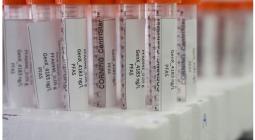Rapidly rising levels of TFA ‘forever chemical’ alarm experts

Rapidly rising levels of TFA, a class of “forever chemical” thought to damage fertility and child development, are being found in drinking water, blood and rain, causing alarm among experts.
TFA, or trifluoroacetic acid, is a type of per- and polyfluoroalkyl substance (PFAS), a group of human-made chemicals used widely in consumer products that do not break down for thousands of years. Many of the substances have been linked to negative effects on human health.
Studies from across the world are reporting sharp rises in TFA. A major source is F-gases, which were brought in to replace ozone-depleting CFCs in refrigeration, air conditioning, aerosol sprays and heat pumps. Pesticides, dyes and pharmaceuticals can also be sources.
“Everywhere you look it’s increasing. There’s no study where the concentration of TFA hasn’t increased,” said David Behringer, an environmental consultant who has studied TFA in rain for the German government.
“If you’re drinking water, you’re drinking a lot of TFA, wherever you are in the world … China had a 17-fold increase of TFA in surface waters in a decade, the US had a sixfold increase in 23 years.” TFA in rainwater in Germany has been found to have increased fivefold in two decades.
“I’m worried about this because we’ve never seen in recent history a chemical that’s accumulating in so many media at such a high rate,” said Hans Peter Arp from the Norwegian Geotechnical Institute and the Norwegian University of Science and Technology. “It’s accumulating in our tap water, the food we’re eating, plants, trees, the sea, and all in the past few decades.”
He added: “We all have been experiencing rising TFA concentrations in our blood since the Montreal protocol [banned CFCs]. Future generations will have increasing concentrations in their blood until some kind of global action is taken. Accumulation [in the environment] is essentially irreversible and I’m afraid the impact on humans and the environment won’t be recognised by scientists until it is too late.”
Last month, the German chemical regulator informed the European Chemicals Agency that it wanted TFA classified as reprotoxic, meaning it can harm human reproductive function, fertility and foetal development.
Denmark and Germany have set limits for TFA in drinking water but the UK has not. England’s water companies have been asked to assess their drinking water sources for 47 types of PFAS but TFA is not on the list.
Britain’s Health and Safety Executive has identified TFA as “a substance of concern, since there are indications that it might cause developmental toxicity” and the Environment Agency says it is planning a targeted programme to test for TFA in surface and groundwater.
A Department for Environment, Food and Rural Affairs spokesperson said it would continue to “assess levels of PFAS occurring in the environment, their sources, potential risks and to inform policy and regulatory approaches.
“Regulations require that drinking water must not contain any substance at a level which would constitute a potential danger to human health. Should TFA be detected in drinking water we would expect companies to react in the same way as for other PFAS compounds.”
But TFA is incredibly difficult to remove from water. “There’s no way to get TFA out,” said Behringer. “Reverse osmosis is massively expensive and not scalable, so the logical course is to stop the input.”
The European Fluorocarbons Technical Committee, representing the F-gas and chemicals industry, says TFA occurs naturally in large quantities in the environment. It says industrial use of TFA is limited and environmental releases are very low. It did not respond to a Guardian request for comment.
But these assertions have been disputed. The US Environmental Protection Agency says TFAs are a breakdown product of F-gases. Moreover, studies of Arctic ice cores show TFA levels have been rising sharply since F-gases replaced CFCs in the 1990s.
“Every time the industry says it’s natural, they quote certain scientific papers,” says Prof Shira Joudan, an environmental analytical chemist at the University of Alberta. She said she had studied these decades-old papers and found they only suggested it was possible that TFA was naturally occurring because of a lack of knowledge of its origins at the time of the studies.
“None of the evidence says it’s natural,” said Joudan. “When industry says it’s natural it’s a danger, because then no one takes accountability for the pollution.”
Ariana Spentzos, of the NGO Green Science Policy, said: “We’re following the familiar PFAS playbook by allowing reckless environmental contamination and only figuring out after the fact the trail of harm left behind. We are just beginning to understand the health hazards associated with TFA.”
Environmental groups are calling on the UK government to take more action to tackle PFAS substances. “PFAS presents a global chemical pollution crisis which requires urgent action,” said Hannah Evans, from the campaign group Fidra. “We’re calling on the UK government to prevent PFAS emissions at source, which includes revising both F-gas and pesticide regulations to phase out PFAS.”
The German Environment Agency recommends using natural refrigerants instead. Its president, Dirk Messner, said: “TFA is found everywhere – in water, soil, food and the human body. It does not break down and can hardly be removed from drinking water. However, TFA-forming chemicals are numerous and on the rise. Persistent substances from multiple sources like TFA fall through the regulatory cracks. To reduce the release of TFA into the environment, we need consistent, precautionary regulation, cross-sectoral minimisation and a substitution with TFA-free alternatives wherever possible.“




